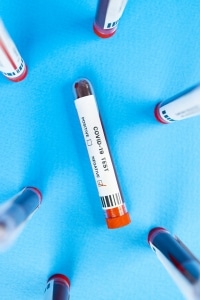At-Home Testing Expanding Reach Beyond COVID-19 Pandemic
Over the years, the increasing introduction of transportable, portable, and handheld medical instruments has resulted in the migration of point-of-care (POC) testing from the hospital environment to a range of medical and non-medical environments including the workplace, home, disaster care and most recently, convenience clinics. In the face of the ongoing global COVID-19 pandemic, the reliance upon and need for testing without the direct involvement of healthcare professionals has become arguably more important now than ever before, according to Kalorama Information in the new report At-Home Testing: COVID-19 Trends and Future Potential.
Rapid tests to detect the presence of the coronavirus at the point of care, which are faster and cheaper, are a vital addition to the testing arsenal needed to contain and fight COVID-19, even with vaccines readily available. There are now FDA-authorized COVID-19 tests sold online and in stores that can be used completely at home. At-home tests allow individuals to collect their own sample and test it with a system that gives results in minutes at home.
It’s been more than one year since the world was thrown into the chaos of the COVID-19 pandemic. One thing that has become apparent is that early diagnosis is crucial to prevent the spread of such infectious diseases throughout a community. Rapid diagnosis, such as what is offered through at-home testing, is also key to containing outbreaks by allowing for efficient contact tracing in communities.
In many situations, POC and self-testing at home are tools to overcome roadblocks in testing due to sampling issues and testing delays. Self-collected samples and home tests are provided by a growing number of hospital and independent laboratories to expand the network of testing options in all major markets in North America and Europe.
Home self-testing is not new: pregnancy tests, urine screening dipsticks, and glucose monitoring products are readily available in pharmacies and retail outlets in various major markets worldwide. Consumers also make online purchases of kits marketed for STIs, HIV, allergies, vitamin D, food sensitivity, ancestry, and DNA testing. These kits generally involve the collection of cheek swabs and saliva specimens that are then sent to a laboratory for processing.
From a public health perspective, at-home self-tests can offer advantages when used to complement professionally administered rapid tests or lab-based tests. They can improve the accessibility to testing. They allow individuals to obtain the result very quickly, which could support the early detection of infectious cases and reduce further community transmission.
Despite the apparent positives, the home-based rapid tests for infectious diseases are a work in progress and have their share of critics. Naysayers contend that preanalytical problems often surface with self-collection methods and home tests that can put patients at risk. While home sample collection kits are designed to be simple, problems commonly occur with self-collection that can affect the quality of the sample and, therefore, the subsequent test result.
Nevertheless, from a public health perspective, self-tests can offer advantages when used to complement professionally administered rapid tests or lab-based tests. They can improve the accessibility to testing. They allow individuals to obtain the result very quickly, which could support the early detection of infectious cases and reduce further community transmission.
Self-testing with over counter (OTC) and direct to the consumer (DTC) kits could therefore enhance disease control with efficient identification and isolation of cases. However, there again are potential disadvantages, as shifting the responsibility of reporting test results from health professionals and laboratories to individuals could lead to underreporting, and make response measures such as contact tracing and quarantine of contacts challenging because the test results do not enter a government database. Current indicators for monitoring the intensity and spread of the COVID-19 pandemic such as testing rates, test positivity rates, and case notification rates, could be affected, and could make it difficult to monitor disease trends over time. An additional challenge is that samples from self-testing would not be available for viral sequencing and monitoring variants.
For more information on these and other topics related to this market, purchase At-Home Testing: COVID-19 Trends and Future Potential by Kalorama Information at: https://kaloramainformation.com/product/at-home-testing-covid-19-trends-and-future-potential/.

Rapid tests to detect the presence of the virus at the point of care, which are faster and cheaper, are a vital addition to the testing arsenal needed to contain and fight COVID-19.

